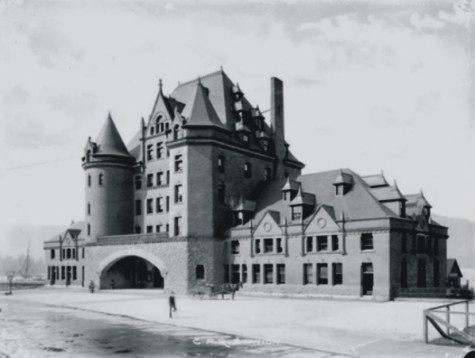
Here's the newly completed CPR station in about 1900. Not T C Sorby's first station that lasted a very short time just over 10 years. This one sat right at the foot of Granville Street, and despite its grandeur it only lasted fifteen years before being replaced by the one still standing today.
The designer was a German immigrant, Edward Colonna (who had changed his name from Klonne when he became a US citizen). Colonna came to CP from designing the interior of rail coaches, and before that working in New York for Louis Comfort Tiffany. On leaving CP in the early 1890s as the railway boom was ending he designed for Maison de l'Art Nouveau in Paris, both jewellery and furniture. He then moved to Toronto, where he worked for 20 years before retiring to Nice where he died, aged 86, having been paralyzed and bedridden for over 20 years.
Colonna's station design was only partly complete when a severe down turn in the economy saw construction halted. The building's final appearance was completed in 1899 by Montreal based (and born) architect Edward Maxwell, who reworked Calonna's design but stayed true to its Gothic style. Indeed for the now demolished Ottawa station he adopted a similar chateau style, and for an economy sized version head to The Keg in New Westminster where Maxwell's $35,000 1899 station can still be found.
Today the site consists of a parkade that's associated with the offices in the replacement station and the office tower at Granville Square built in the 1970s as one of the few completed parts of Project 200, a huge urban renewal scheme that would have seen Gastown swept away.
Source: Changing Vancouver


